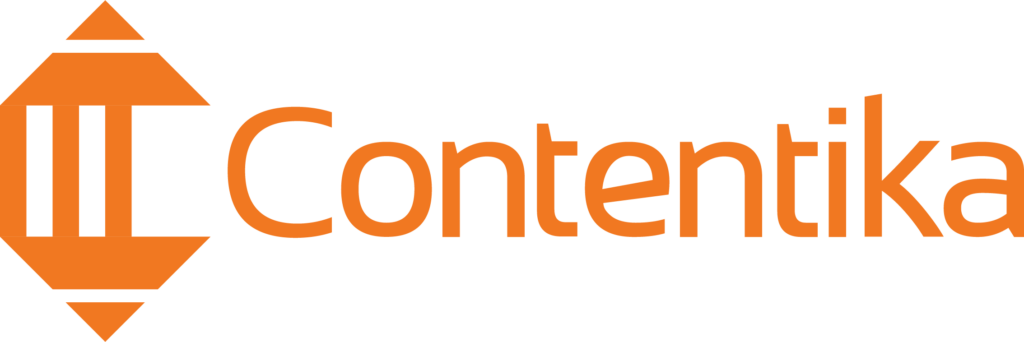Content Development: The Key to Unlocking Your Growth
Unlock the full potential of your content marketing efforts by learning how to develop content that engages your audience.
The Ultimate Guide to Paid Ads Management: Everything You Need to Know
Advertising on the internet is like a giant cake; everyone wants a piece of it. Politicians, celebrities, influencers, small business owners, multinational organizations, and government agencies are all vying for a piece of this cake. According to a report by Statista, global advertising revenue in 2022 was estimated at 808 billion U.S. dollars, and is expected to cross the $1 trillion mark by 2026. This rapid growth is due to the increasing use of social media and the proliferation of mobile devices. With more people than ever spending time online, it is expected that businesses will capitalize on this to boost their brand awareness and sales. If paid advertising is essential for your business (I bet it is), then this guide is for you. You’ll learn the fundamentals of search and social advertising, the available social media advertising platforms, and how to manage your paid ads. Fundamentals of Online Advertising Advertising, whether online or offline, has three main goals: to make people aware of a product or service, convince them to buy it, and remind them about it. Online advertising is a subset of digital marketing that uses the internet to deliver promotional marketing messages to consumers. It uses several methods, such as search engine optimization (SEO), pay-per-click (PPC) advertising, display advertising, and social media marketing, to reach these goals. Each of these strategies has its pros and cons, but when used together, they can make a strong marketing campaign that can reach a large number of people. Online advertising can be a good way to get the word out about your product or service if you use the right mix of strategies. Digital marketing has gained immense popularity in recent years for a number of reasons. As a result of these factors, online marketing is expected to continue to grow in popularity in the years to come. Paid Ads 101 From search engine ads to Facebook and Instagram promotions, paid advertising has become a staple for businesses looking to get their products and services in front of potential customers. In 2023, it is expected that spending on digital advertisements would increase by 13.8% over the previous year’s total. Businesses are realizing the benefits of paid search and social media advertising, which is why they are increasing their spending on this form of marketing. Search and social media advertising can be an incredibly effective way to reach new audiences and generate leads. But how do they work, exactly? And what are some of the most common types of targeted ads? Let’s take a closer look. Paid advertising is simply paying for space on a website or online platform to promote your business. One of the most common type of paid ads is the search engine ad, which appears at the top of the results page when someone searches for a keyword or phrase related to your business. These ads are highly targeted, which means they’re more likely to be clicked by people who are already interested in what you have to offer. Another common type of paid ads is display ads; which appear on websites and apps. It has a history of being the first ever online ad to ever appear on the internet. Other popular types of paid ads include social media ads, which appear on platforms like Facebook, Twitter, and Instagram; and video ads, which appear before or during online videos. Paid advertising may be a very efficient approach to promote your company or product, but it is essential that you do your homework beforehand. It is crucial to conduct your research (It’s good you’re reading this guide) and have a good understanding of search and social media advertising campaigns before beginning any sponsored advertising campaign. If you don’t do this, you run the risk of losing a lot of money on campaigns that don’t work. Paid Ads vs. Organic Traffic Before we venture any further into the world of sponsored advertising, let’s first determine which type of advertising is most beneficial to your company by contrasting paid advertising with its free relative, organic traffic. Paid advertising is when you pay a fee to have your company’s advertisement placed on a website or other online platform. Organic traffic, on the other hand, is when people find your company through search engines or other means without you having to pay for it. Organic traffic is free traffic you get from search engines (assuming you’re not paying someone to help you improve your search engine ranking). But it can take a lot longer to see results. The upside of organic traffic is that it’s more sustainable in the long run. Once you’ve ranked highly in search engine results, you’ll continue to get traffic even if you don’t invest any additional time or money into SEO. So, if you’re patient and willing to put in the work upfront, organic traffic can be a great option for your business. However, it is highly recommended to invest in both paid ads and organic traffic. Anyone who has ever tried to grow a garden knows that it takes a lot of work to get the plants to thrive. The same can be said of businesses – it takes a lot of effort to make them successful. One of the most effective ways to promote a business is to invest in both paid and organic traffic. Paid ads can serve as your company’s first impression to potential customers, while organic traffic will give your company a lasting impression. Paid ads can amplify your organic traffic, making it easier for potential customers to find your business. Ultimately, investing in both paid and organic traffic can help you reach a wider audience, as well as build brand awareness and trust. Paid Social vs. Paid Search In the world of online marketing, there are two main types of paid advertising: paid social media advertising and paid search advertising. Paid social media ads are those that appear on social media platforms, such as Facebook, Instagram, and Twitter. They
The Ultimate Guide to Using Case Studies in Content Marketing [+Free Template]
Demonstrating your product or service is key to capturing customer interest. Discover how to leverage case studies in content marketing to achieve this.
Stand Out with Visual Marketing: Best Practices
Visual marketing is a strategy that every business should have in its marketing arsenal. Hang around to learn how to boost sales using this effective strategy.
Getting Started with Content Marketing: A Complete Beginner’s Guide [+Free Template]
Get expert tips on how to start a successful content marketing campaign. Develop a strategy, create high-quality content, measure your progress and drive results.
Master the Art of Crafting Flawless Blog Posts Every Time with These 21 Essential Checklists

Blogpost checklists help create stellar blog posts. Here is the must-have checklist for crafting the perfect blog post every time!
A Deep Dive into the Power and Impact of User-Generated Content

Find out what user-generated content(UGC) is, its benefits, and some tips on leveraging UGC for maximum impact.
The Ultimate Guide to a Successful SEO Content Marketing Strategy [+Free Template]
Looking to drive website traffic and conversions through SEO? This blog post provides a comprehensive content marketing and SEO strategy for doing just that.
A Comprehensive Guide to Creating a Killer Content Plan
Wondering how to create a killer content plan to help you achieve your marketing goals and stand out from the competition? Find out here!
Content Curation: Tools, Techniques, and Tips for Maximal Efficiency

As a content marketer, it’s easy to feel overwhelmed when it comes to content. With so much information out there, how can you ensure that you’re curating only the best and most relevant material for your audience? The fluffs and pompous jargon should be left behind, and instead, focus on crafting meaningful content that adds real value to your target audience. To aid in this process, having a set of tools and techniques at your disposal is helpful. In this blog post, we’ll walk you through all the essentials for efficient content curation, including some of the best tools for content curation. You’ll also get insider tips for maximizing efficiency and streamlining your workflow in the content curation process. What is Content Curation? Content curation is discovering, organizing, and sharing relevant and valuable content with a specific audience. You find the most impactful and valuable information within a particular niche or topic, then present it in a cohesive way for your target audience. In the same way a chef carefully selects the ingredients for a dish, content curation involves hand-picking and organizing relevant information and resources for your audience. It’s not just about gathering any random content; it’s about selecting only high-quality, valuable material that adds value to your brand’s narrative. A critical aspect of content curation is adding your unique spin or perspective on the material – it’s not just about reposting and regurgitating information but adding your own insights and value to the content. It follows the proverb that “good artists borrow, great artists steal” – curating content involves borrowing ideas and insights from various sources, then turning it into something new and original. Like many people, don’t make the common mistake of thinking that content curation is the same as content creation. That would be a fallacy. Content curation is the process of finding, organizing, and sharing useful information with your audience. But content creation involves developing original content from scratch – it’s not just about gathering and sharing material but creating your own unique or fresh content ideas and materials. Both are essential aspects of a successful digital marketing strategy. Best Practices for Content Curation To curate content that truly adds value for your audience and not just a run-of-the-mill collection of content, there are specific tips and techniques that will help guide your process. Not only will these tips make your content curation more effective, but they’ll give you an edge over those sharing mediocre content. Set Clear Goals and Objectives No content marketer ventures into content curation without a purpose. Take the time to define your goals and objectives clearly. In other words, before diving into finding content, have a clear idea of what you want to achieve with your curation. Your goals must be SMART – specific, measurable, attainable, relevant, and time-bound. This will help guide your content curation process and ensure that the content you share Keep Your Audience in Mind When curating content, always keep your audience in mind. Focus on sharing content that will genuinely add value for them and address their pain points or interests. You need to understand your audience. Know their interest and pain points and then curate content that they will find valuable. Importantly, stay up to date on industry developments and trends. This will help guide your content curation process and ensure that the content you share is relevant and helpful. Choose Quality Over Quantity Getting caught up in the quantity game regarding content curation is easy. But remember, it’s better to share a few high-quality pieces of content than a long list of mediocre ones. Take the time to carefully evaluate each piece before sharing it with your audience. Consider things like relevancy, accuracy, and uniqueness. You can also add your insights or commentary on the content to provide added value for your audience. Share a Variety of Content Types To keep your audience engaged, mix up the type of content you share. This can include blog posts, infographics, videos, podcasts, and more. In addition, make sure to curate content from various sources – not just the big players in your industry. This will add diversity and fresh perspectives to your content curation. Have a Scheduled Time for Content Curation Just like it is with posting your content, consistency is key for curation as well. Set aside a specific week or time to search for and evaluate potential content to share. This will ensure that you consistently provide valuable content for your audience without letting it fall by the wayside. Promote Your Content Your content should also be a part of your curated content mix. This is an excellent opportunity to promote and drive traffic back to your own content and establish yourself as a thought leader with remarkable industry expertise. Just make sure not to do everything right. The focus should still be on providing valuable content from a variety of sources, including your own. Regularly Review Your Performance Regularly review the performance of your content curation efforts. Use analytics and metrics to determine what resonates with your audience and what isn’t. This will allow you to make any necessary adjustments and improve your content curation strategy moving forward. Add Your Own Commentary or Insights Incorporating your insights or commentary on the content can add value for your audience and position you as a thought leader in your industry. Offer your unique perspective on the curated content – add in your thoughts or analysis to add value for your audience. This can also help differentiate your curated content from the rest and make it more memorable. But keep it simple – the focus should still be on sharing valuable content from a variety of sources. Use a Content Curation Tool There are various tools available to make the content curation process easier. This can include social media scheduling and management tools and curated content discovery platforms. Using a tool can streamline the curation process and save you time in the long run.


